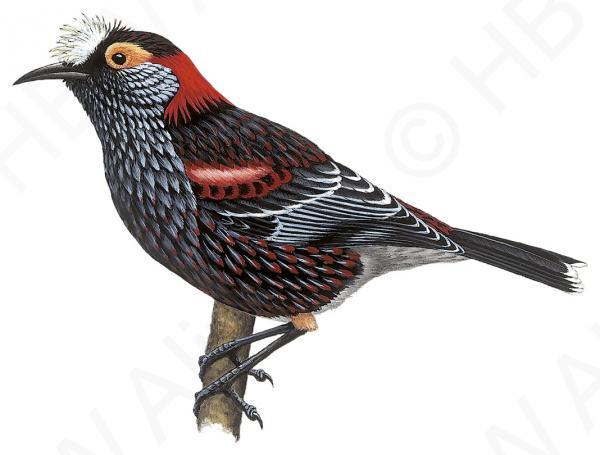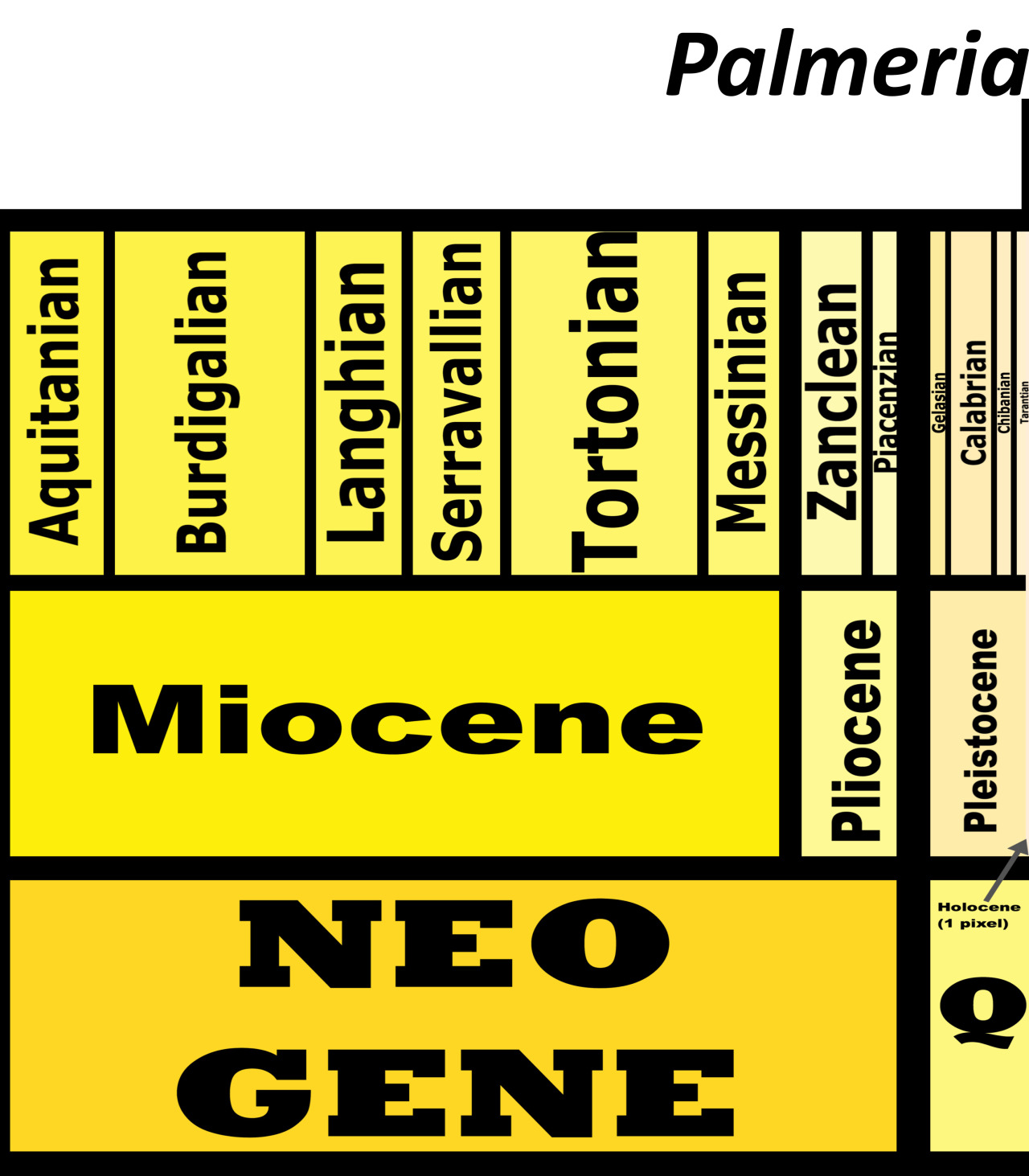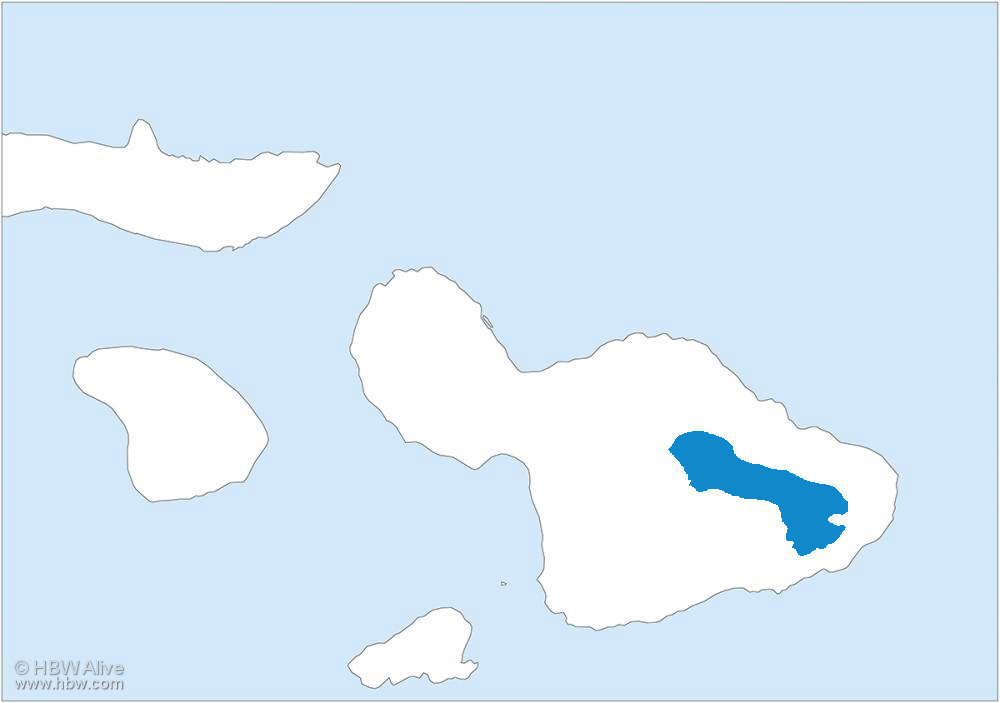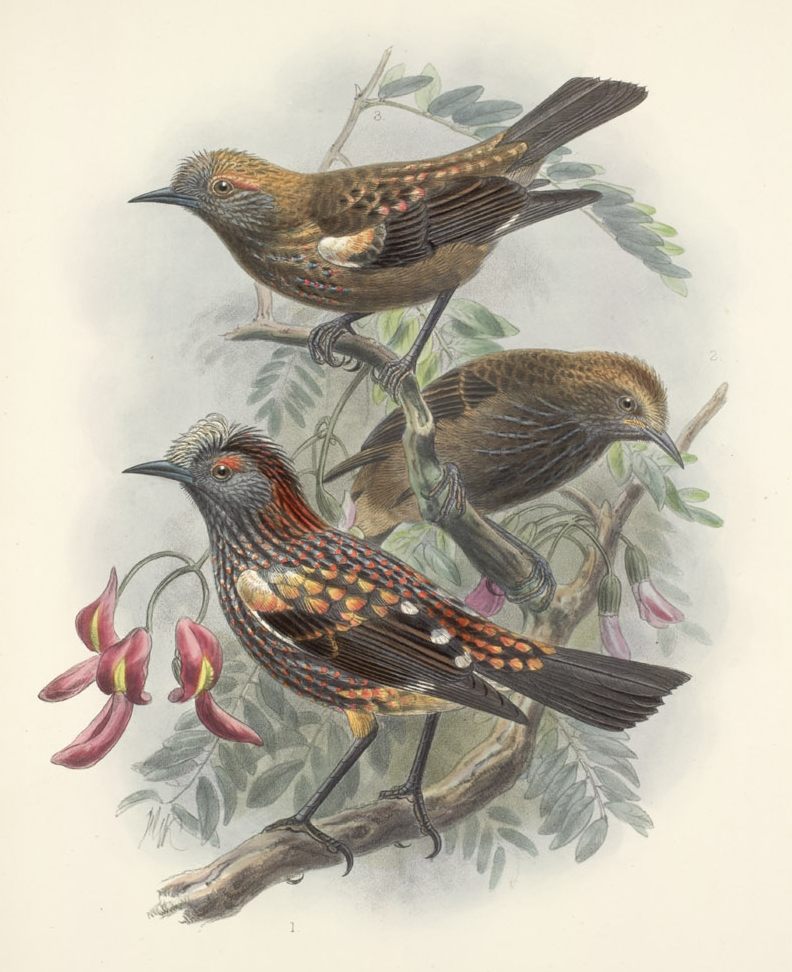Palmeria dolei

By Douglas Pratt
Etymology: For Henry C. Palmer
First Described By: Wilson, 1891
Classification: Dinosauromorpha, Dinosauriformes, Dracohors, Dinosauria, Saurischia, Eusaurischia, Theropoda, Neotheropoda, Averostra, Tetanurae, Orionides, Avetheropoda, Coelurosauria, Tyrannoraptora, Maniraptoromorpha, Maniraptoriformes, Maniraptora, Pennaraptora, Paraves, Eumaniraptora, Averaptora, Avialae, Euavialae, Avebrevicauda, Pygostaylia, Ornithothoraces, Euornithes, Ornithuromorpha, Ornithurae, Neornithes, Neognathae, Neoaves, Inopinaves, Telluraves, Australaves, Eufalconimorphae, Psittacopasserae, Passeriformes, Eupasseres, Passeri, Euoscines, Passerides, Core Passerides, Passerida, Passerid Clade, Fringillidae, Carduelinae, Drepanidini
Status: Extant, Critically Endangered
Time and Place: Within the last 10,000 years, in the Holocene of the Quaternary


The ‘Akohekohe is known only on the island of Maui in Hawai’i

Physical Description: ‘Akohekohe are a species of Hawai’ian Honeycreepers, a type of extremely unique passerine threatened with extinction due to mammalian invaders on the island. ‘Akohekohe are medium-sized perching birds, extremely distinctive in appearance - 18 centimeters long, with males somewhat heavier than females; both sexes have the same set of extremely distinctive patterns. The birds have white fluffy tufts of feathers above their long, thin, curved beak; black patches underneath the fluff on the head, with an orange patch around the eye. The neck and cheeks have black and white spottled feathers in distinctive patterns, while the back of the neck is red in color. The back itself is red and black, while the belly is red, white, and black. The wings have black and red spots on the shoulder, with black and white feathers on the wing. Finally, the butt is white, the back of the rump is red, and the tail feathers are short and black with white tips. One of the most distinctive and brilliantly patterned birds out there! The females have similar patterns, but are duller in color.
Diet: These are nectar specialists, feeding on the nectar of Ohia flowers, raspberry flowers, pukiawe, ohelo, kolea, and kanawao. Sometimes it will eat caterpillars, flies, and spiders.

By John Gerrard Keulemans, in the Public Domain
Behavior: The ‘Akohekohe will feed in lines on blooming trees, usually going from tree to tree in a regular cycle - even defending territories of trees they claim as their own to prevent other members of the species from feeding there. They make weirdly human-like whistles to one another, before making eerie echoing whistles in response. As for songs, they make reedy whistles and even cowbell-like grunts and squawks to one another. They even make weird ahh-ko-he-ko-heh calls, hence its name!
This bird breeds in small colonies, with each colony adjacent to one another. The males make huge, aerial acrobatic displays to attract females, before singing high in the forest canopy; the mated pairs will feed each other throughout the breeding cycle from November through June. Females build the nests out of twigs, tossed with moss and lichens, usually about 14 meters above the ground in the upper layers of the canopy. They lay one or two grey eggs that are incubated by the female and guarded by the male for two weeks; both parents then feed the babies for three more weeks. These birds mainly migrate in search of open Ohia flowers.
Ecosystem: The ‘Akohekohe live in ohia-lehue dominated forests with koa trees and dense olapa in the understorey; which means they’re almost all above 1500 meters in elevation.

By the U.S. Pacific Island Ecosystems Research Center, in the Public Domain
Other: The ‘Akohekohe used to be much more common and have a much larger range than today; populations initially took a hit after the settlement of Polynesians, as they cut down forests to make farmland, destroying the habitat of the birds. However, they did bounce back some from that, and it was sustainable. The arrival of Europeans lead to even more deforestation and the arrival of rats and cats. These animals attacked the eggs, chicks, and adults of many birds, and also ate the flowers (in the case of the rats) that the birds rely on. The unusual appearance of the ‘Akohekohe also lead to collectors poaching it, leading to even more decline. Mosquitoes introduced to Hawai’i spread dangerous diseases to the birds. Invasive birds released by European settlers on the island also lead to sharp declines in population.
Today, there are not many of these birds left; climate change also severely threatens them. It’s protected by law today, well, by like ten different laws; recovery plans are in place to try and keep the birds safe, and many of their habitats are very well closed off. Hopefully, continued responsible practices will keep this bird around, but it’s a delicate situation.
~ By Meig Dickson
Sources under the Cut
Jobling, J. A. 2010. The Helm Dictionary of Scientific Bird Names. Christopher Helm Publishing, A&C Black Publishers Ltd, London.
Pratt, D. (2019). Akohekohe (Palmeria dolei). In: del Hoyo, J., Elliott, A., Sargatal, J., Christie, D.A. & de Juana, E. (eds.). Handbook of the Birds of the World Alive. Lynx Edicions, Barcelona.























